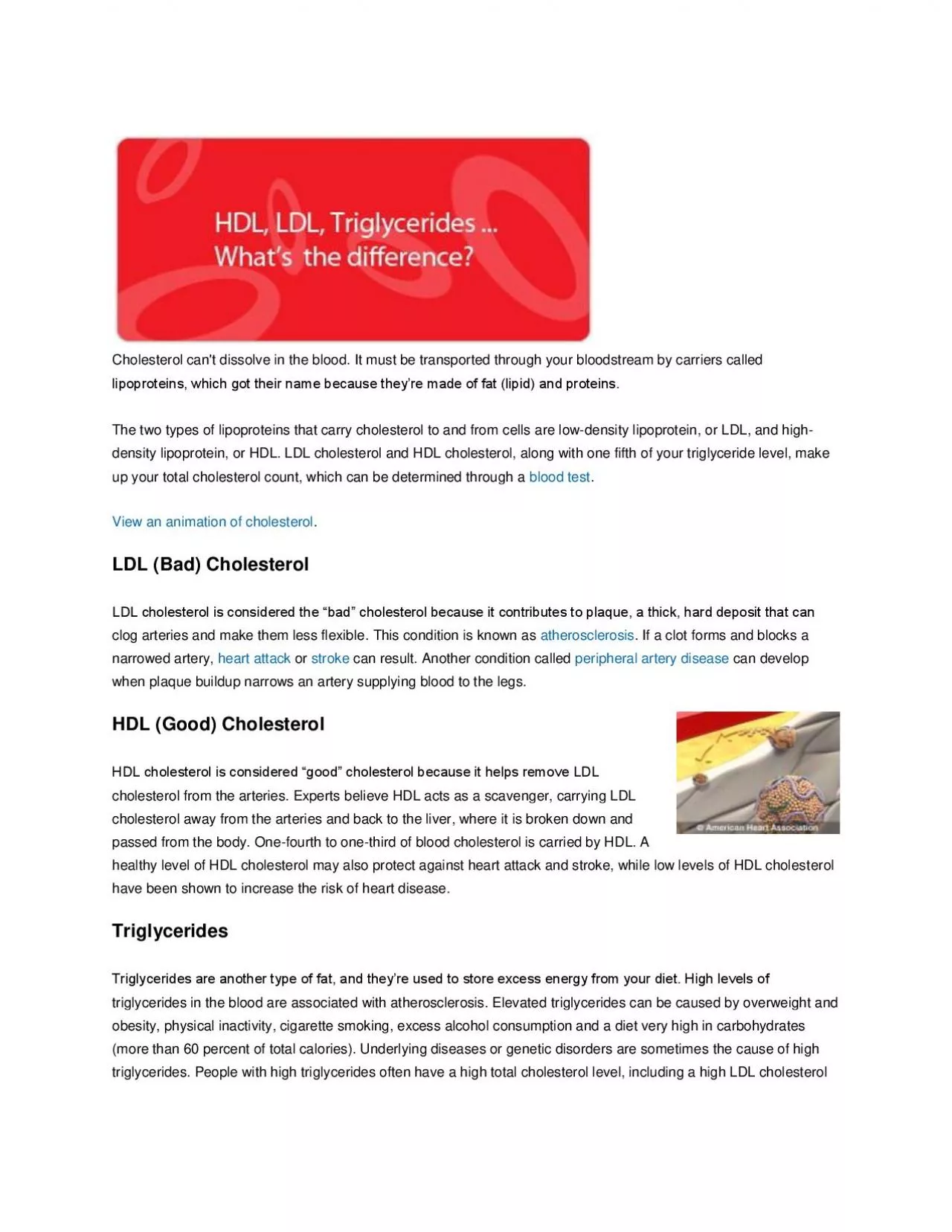

Chole lipoproteins which got their name because theyre made of fat lipid and proteins The two types of lipoproteins that carry cholesterol to and from c ells are low density lipoprotein or ID: 940217
Download Pdf The PPT/PDF document "sterol cant dissolve in the blood It mus..." is the property of its rightful owner. Permission is granted to download and print the materials on this web site for personal, non-commercial use only, and to display it on your personal computer provided you do not modify the materials and that you retain all copyright notices contained in the materials. By downloading content from our website, you accept the terms of this agreement.
Chole sterol can't dissolve in the blood. It must be transported through your bloodstream by carriers called lipoproteins, which got their name because they’re made of fat (lipid) and proteins. The two types of lipoproteins that carry cholesterol to and from c ells are low - density lipoprotein, or LDL, and high - density lipoprotein, or HDL. LDL cholesterol and HDL cholesterol, along with one fifth of your triglyceride level, make up your total cholesterol count, which can be determined through a blood test . View an animation of cholesterol . LDL (Bad) Cholesterol LDL cholesterol is considered the “bad” cholesterol because it contributes to plaque, a thick, hard deposit that can clog arteries and make them less flexible. This condition is known as atherosclerosis . If a clot forms and blocks a narrowed artery, heart attack or stroke can result. Another condition called peripheral artery disease can develop when plaque buildup narrows an artery supplying blood to the legs. HDL (Good) Cholesterol HDL cholesterol is considered “good” cholesterol because it helps remove LDL cholesterol from the arteries. Experts believe HDL acts as a scavenger, carrying LDL cholesterol away from the arteri es and back to the liver, where it is broken down and passed from the body. One - fourth to one - third of blood cholesterol is carried by HD
L. A healthy level of HDL cholesterol may also protect against heart attack and stroke, while low levels of HDL cholest erol have been shown to increase the risk of heart disease. Triglycerides Triglycerides are another type of fat, and they’re used to store excess energy from your diet. High levels of triglycerides in the blood are associated with atherosclerosis. Elevated triglycerides can be caused by overweight and obesity, physical inactivity, cigarette smoking, excess alcohol consumption and a diet very high in carbohydrates (more than 60 percent of total calories). Underlying diseases or genetic disorders are sometime s the cause of high triglycerides. People with high triglycerides often have a high total cholesterol level, including a high LDL cholesterol (bad) level and a low HDL cholesterol (good) level. Many people with heart disease or diabetes also have high triglyceride levels. Lp(a) Cholesterol Lp(a) is a genetic variation of LDL (bad) cholesterol. A high level of Lp(a) is a significant risk factor for the prema ture development of fatty deposits in arteries. Lp(a) isn't fully understood, but it may interact with substances found in artery walls and contribute to the buildup of fatty deposits. Learn more: What your cholesterol levels mean Learn about hyperlipidemia This content was last reviewed on 04/21/2014.